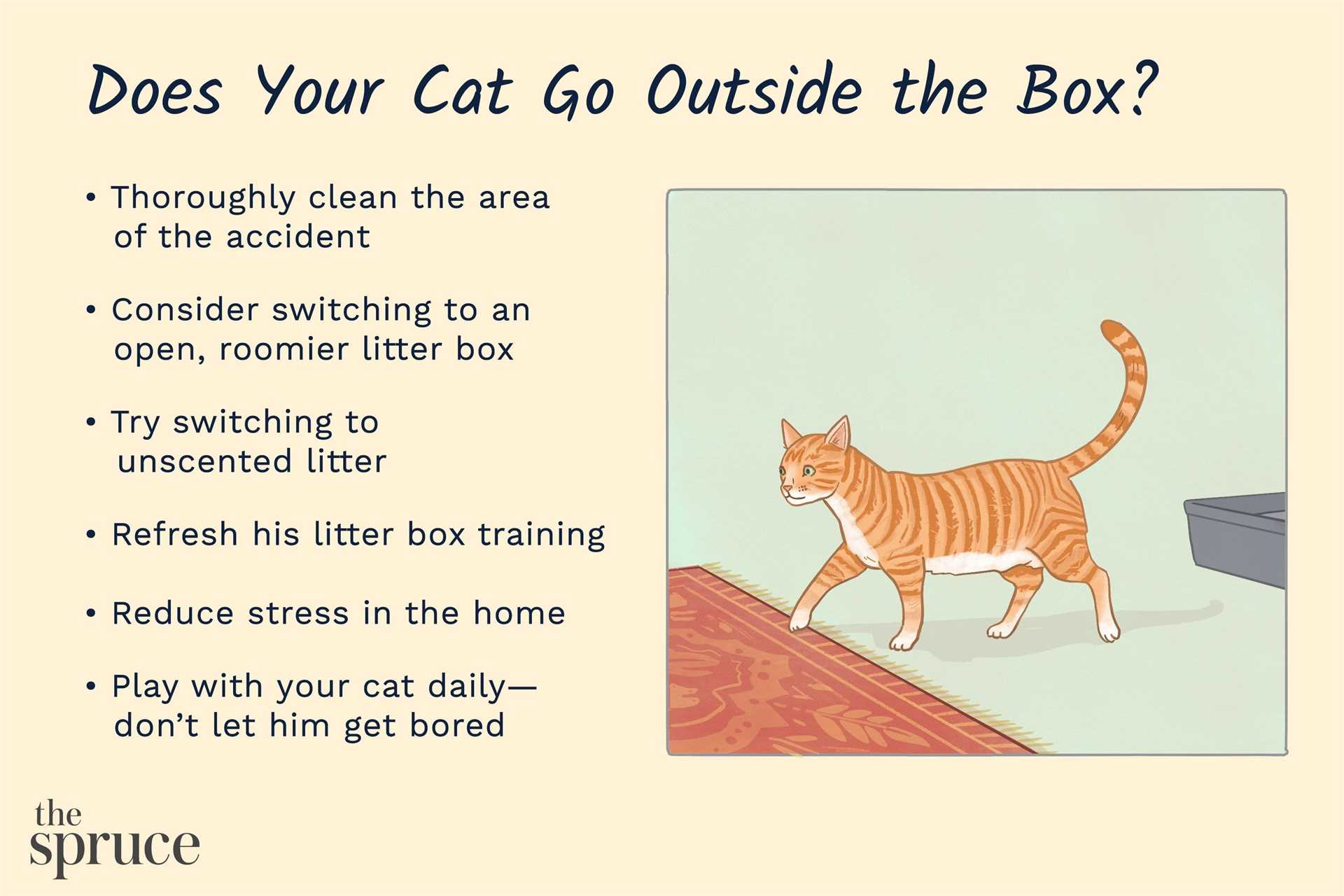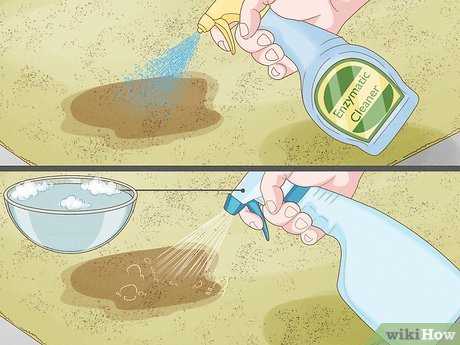

Start with a mixture of white vinegar and water in equal parts. This solution effectively neutralizes odors and breaks down residues. Use a clean cloth to blot the affected area, avoiding scrubbing, which can spread the issue. Once the area is damp, let it sit for around 10 minutes and then blot it dry.
After the initial treatment, sprinkle baking soda generously over the same spot. Baking soda is excellent for absorbing lingering fragrances. Leave it for several hours or overnight if possible, then vacuum thoroughly to remove any powder and trapped odors.
An enzymatic cleaner specifically designed for biological stains can be a game-changer. These cleaners break down the organic matter causing the unpleasant scent. Follow the instructions on the label for the best results, ensuring the area is well-ventilated during the application.
Finally, consider using an air purifier or placing bowls of activated charcoal nearby to absorb any remaining odors. Regular maintenance and cleaning can help prevent future issues, keeping your space smelling fresh.
Identify the Source of the Odor
First, check areas where I usually hang out. Look under furniture, behind curtains, and in corners. Sometimes, a hidden spot might be the culprit.
Next, observe any discoloration or texture change on the fibers. This can indicate a problem area. If the carpet feels sticky or damp, it’s worth investigating further.
Use your nose to pinpoint the strongest scent. Start from the most likely locations and work your way outward. This will help narrow down the exact spot.
Consider using a blacklight. It helps make any hidden stains more visible, revealing where I might have left a surprise.
If the odor persists, check for any accidents outside the usual area. My litter box might need attention, or there could be other factors contributing to the unpleasantness.
Gather Necessary Cleaning Supplies
First, you need to have some key items ready for the clean-up process. Grab a pair of rubber gloves to protect your paws, er, hands, while handling messes. A plastic scoop or a small shovel will help in removing any solid waste effectively.
Next, pick up some absorbent materials like paper towels or old rags. These will soak up any liquid and help in tackling stains. A bucket can be handy for mixing cleaning solutions or for disposing of waste.
Make sure to have a cleaner specifically designed for neutralizing odors. Look for products that contain enzymatic formulas, as they break down waste particles. If you prefer natural options, baking soda is fantastic for absorbing unwanted scents, and white vinegar can help with stain removal.
Lastly, a spray bottle is useful for applying your chosen cleaning solution evenly. Having a vacuum cleaner or a carpet cleaner on hand will also assist in thoroughly cleaning the area afterward. With these supplies at the ready, you’ll be all set for a successful cleaning session!
Blot the Area to Absorb Moisture

Immediately tackle the affected spot with a clean cloth or paper towel. Gently press down on the area to soak up any liquid. Avoid rubbing, as this can push the mess deeper into the fibers. Make sure to use a blotting motion; this helps lift away moisture effectively.
Repeat as Necessary
After the first blot, check the cloth for staining. If needed, use a fresh section of the cloth or a new paper towel. Repeat this process until no more moisture transfers to the cloth. It’s crucial to be thorough to minimize lingering issues.
Disinfect After Blotting

Once you’ve absorbed the moisture, consider applying a suitable cleaning solution to eliminate any remaining contaminants. This step is key in preventing any unpleasant odors from returning. Follow the instructions on your cleaner for optimal results.
Apply an enzymatic cleaner to the stain
Choose a high-quality enzymatic cleaner specifically designed for organic stains. These products contain enzymes that break down waste molecules, effectively neutralizing odors that typical cleaners might leave behind.
Follow these steps:
- Shake the bottle well to activate the enzymes.
- Apply a generous amount of the cleaner directly onto the affected area. Ensure it penetrates deep into the fibers.
- Allow the cleaner to sit for the recommended time, usually around 10-15 minutes, to let the enzymes do their job.
- Gently blot the area with a clean cloth or paper towel to absorb excess cleaner and residue.
- If necessary, repeat the application for stubborn stains.
After treatment, it’s beneficial to ventilate the area by opening windows or using fans, as fresh air can help any lingering fragrances dissipate. For a long-term solution, ensure regular maintenance of your litter box, and consider using products like the best liquid dewormer for cats to keep everything in check.
Use Baking Soda for Odor Neutralization
If you want to tackle unpleasant odors effectively, sprinkle a generous amount of baking soda directly onto the affected area. This magic powder absorbs odors naturally and helps refresh the space.
Steps to Follow
Leave the baking soda on the stain for at least 15 minutes, or even longer for stronger odors. For maximum effect, I recommend letting it sit overnight. This gives it ample time to neutralize the unwanted scents.
Cleaning Up
After the resting period, vacuum the area thoroughly to remove the baking soda. This not only eliminates the powder but also any trapped odors. If the scent lingers, repeat the process for a more thorough clean.
Baking soda is safe and non-toxic, making it a perfect choice for homes with furry companions. It’s an easy, affordable solution to keep your living space smelling fresh.
Vacuum the carpet after cleaning
After applying the enzymatic cleaner and allowing it to work, vacuum the area thoroughly. This step is crucial for removing any remaining particles and ensuring no residue is left behind.
Follow these steps for effective vacuuming:
- Use a vacuum with strong suction to capture embedded dirt and debris.
- Go over the treated area multiple times, moving in different directions to cover all angles.
- Check the vacuum filter and canister; empty or clean them if necessary to maintain optimal performance.
After vacuuming, ensure the area is well-ventilated to aid in the drying process. This helps in further reducing any lingering odors. Regular vacuuming also keeps fibers clean and fresh, contributing to a better living space.
Prevent Future Incidents with Training Tips
To avoid unpleasant surprises, consistent training is key. Start by introducing a designated area for bathroom needs. Support this by placing a litter box in a quiet, accessible spot. Make sure it’s always clean; cats prefer tidy spaces.
Positive Reinforcement
Use treats and praise whenever I use the litter box correctly. This builds a positive association with the box. If I have an accident outside the designated area, gently guide me back to the litter box without punishment. Patience is vital.
Regular Routine

Establish a feeding schedule to help regulate my bathroom habits. Predictable times for meals lead to more predictable bathroom breaks. Monitoring my behavior can alert you to any issues, such as changes in my litter box usage. If I seem reluctant to use the box, it might indicate discomfort or health concerns.
For those who enjoy outdoor adventures, consider checking out the best accessories for dog walking. Keeping me safe and happy during outings can prevent accidents at home.









